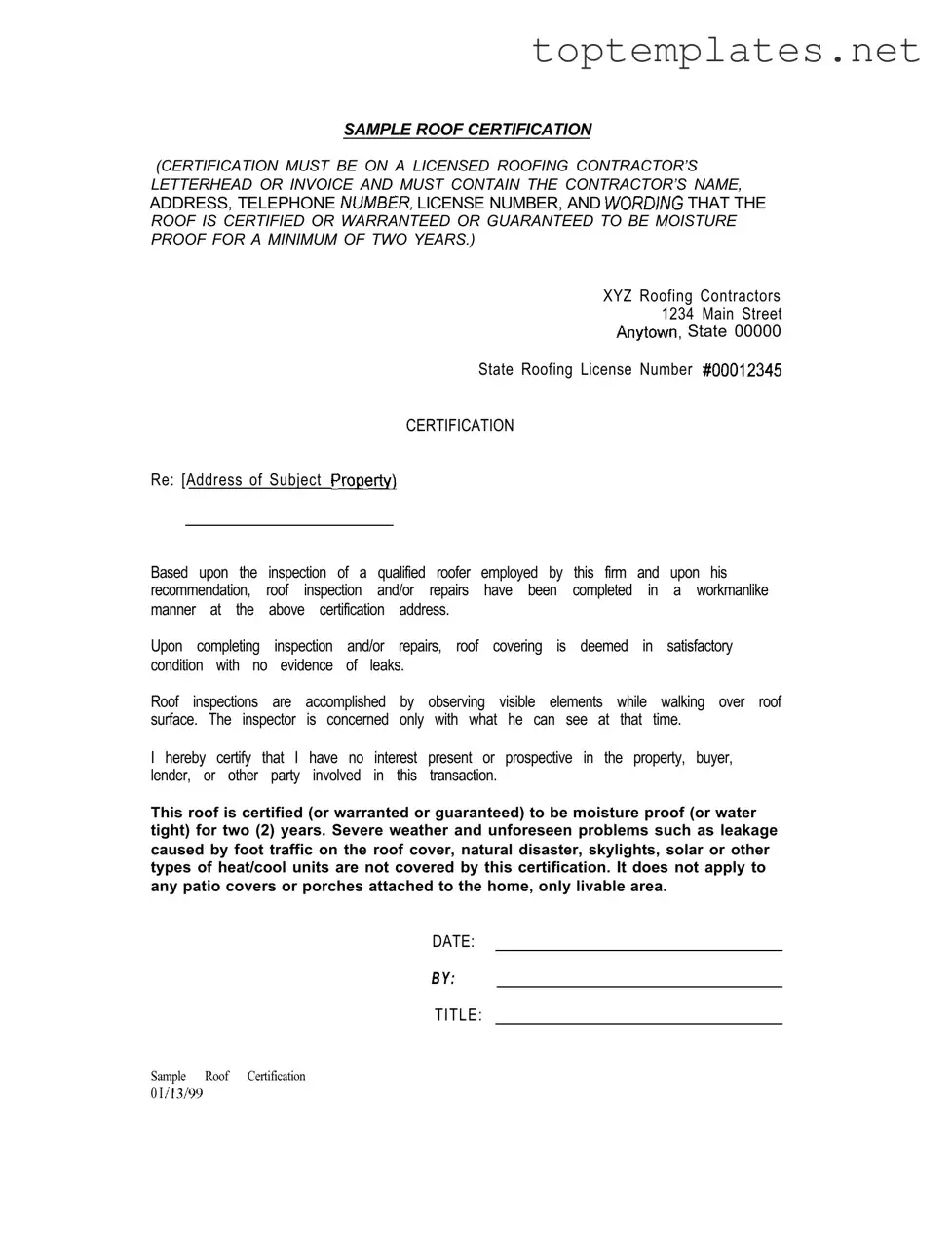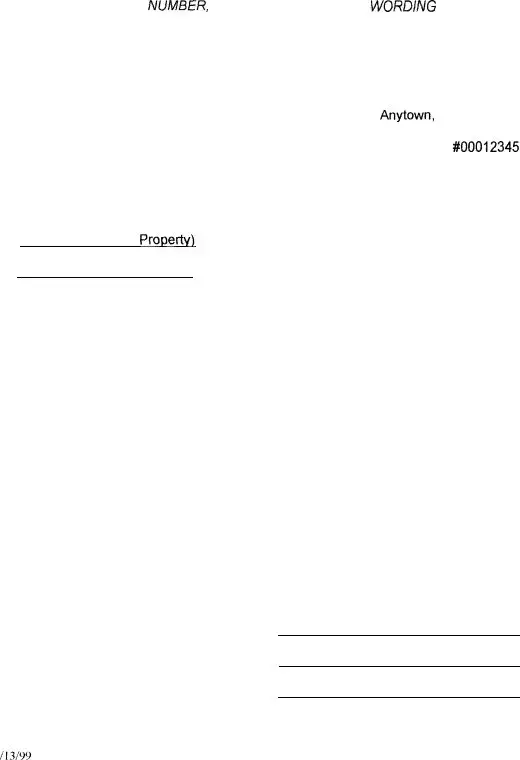What is a roof certification, and why is it needed?
A roof certification is a document provided by a licensed roofing contractor that verifies the condition of a roof and guarantees it to be moisture-proof for a specified period, typically two years. It's essential during real estate transactions or for homeowners insurance purposes to ensure the roof is in good condition and will not require immediate repair or replacement.
Who can issue a roof certification?
Only a licensed roofing contractor with the appropriate qualifications and license number can issue a roof certification. The certification must be on the contractor's letterhead or invoice and include the contractor's name, address, telephone number, and license number.
What does the roof certification process involve?
The certification process involves a thorough inspection of the roof by a qualified roofer employed by the roofing contractor. This includes walking over the roof surface to observe visible elements and determine the roof's condition. Any necessary repairs are completed to ensure the roof is moisture-proof.
What is covered under a roof certification?
The certification covers the roof covering of the livable area of the property, guaranteeing it to be moisture-proof or water-tight for two years. This means it should remain leak-free under normal weather conditions and exclude areas such as patio covers or porches not considered living spaces.
What is not covered under a roof certification?
The certification does not cover damage that might occur from severe weather conditions, natural disasters, or unforeseen problems like leakage caused by foot traffic on the roof. It also excludes installations like skylights, solar panels, or other heat/cool units.
How long is a roof certification valid?
A roof certification is valid for a minimum of two years from the date it is issued. This timeframe should provide adequate assurance to homeowners, buyers, or lending institutions that the roof should not require significant repair or replacement during this period.
What information is required on the roof certification document?
The document must include the licensed roofing contractor's name, address, telephone number, license number, and a statement certifying that the roof is moisture-proof for a minimum of two years. It should also provide the address of the subject property and any observations or repairs made.
Can a roof certification be transferred to a new homeowner?
Yes, a roof certification is generally transferable to a new homeowner, making it a valuable asset during the sale of a property. It provides peace of mind that the roof is in satisfactory condition and protected against leaks for the duration of the certification period.
Is there a difference between a roof certification and a roof warranty?
Yes, there is a difference. A roof certification is a specific document issued by a licensed roofing contractor that guarantees the roof's condition for a limited time, typically two years. In contrast, a roof warranty is often provided by the roofing material manufacturer or the roofing contractor that covers the materials and workmanship for a longer period. The warranty may last anywhere from several years to a lifetime, depending on the terms.

